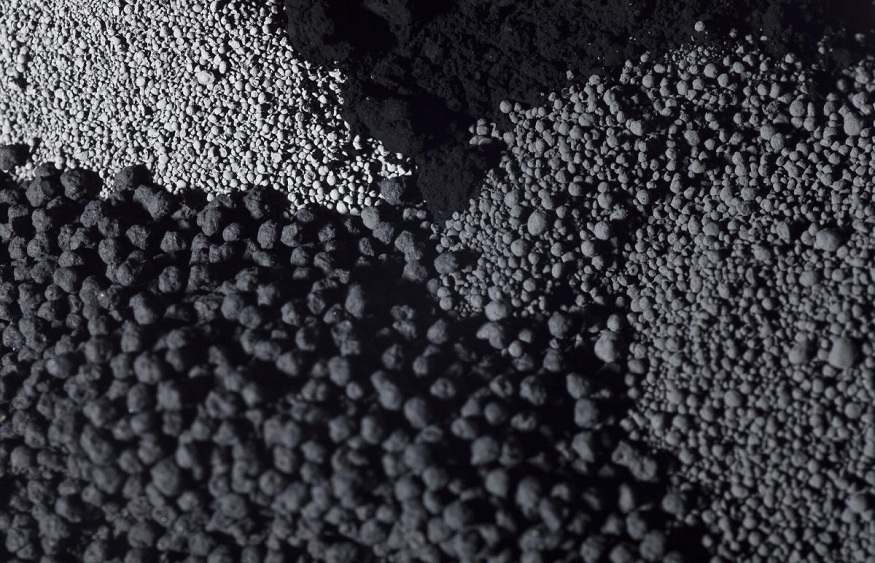Benefits of carbon black coating
One of the pigments that is most often used worldwide is carbon black. This black particulate substance, which is made from petroleum refining leftovers, offers a very wide range of applications. Many materials are improved by the addition of carbon black, including tires, polymers, and coatings. Its numerous advantageous properties are a result of its distinct molecular makeup and nanoscale dimensions. Carbon black constantly provides benefits, whether it’s through conductivity, abrasion resistance, or UV ray absorption. This article will examine the many uses for carbon black coating as well as the main advantages it offers to various sectors.
1. Protecting from UV Rays
UV protection is one of the main advantages of carbon black coating. Carbon black, when used as a topcoat, blocks ultraviolet (UV) light from the sun, which over time can deteriorate surfaces. Extended exposure to sunlight can cause fading, cracking, or embrittlement of plastics, paints, and other materials.
A layer of carbon black aids in preventing UV radiation from the sun. It protects against sun-induced deterioration of buildings, machinery, cars, and other items. As a result, coated items last longer and require fewer future repairs and replacements. For UV protection, several manufacturers use a carbon black coating.
2. Improving Abrasion Resistance
The carbon black covering not only blocks UV rays but also improves abrasion resistance. The minuscule carbon black particles strengthen materials, hardening coated surfaces and reducing their susceptibility to wear. Carbon black coatings have the advantage of being abrasion resistant on a variety of items, including truck beds, in addition to construction equipment, along with conveyor belts, as well as more.
The material resists scuffs, scrapes, and other forms of physical wear and tear well. It shields the objects it coatings against early harm. Surfaces coated with carbon black withstand harsh usage in commercial and industrial settings longer. Over time, the decreased need for replacement and repair saves money and time.
3. Enhancing Corrosion Resistance
Enhancing corrosion resistance further is a wise move when you apply a carbon black finish. Oxygen is displaced by the carbon black particles and is prevented from reaching metal surfaces. This keeps things from rusting or corroding over time when they are exposed to moisture, chemicals, and other corrosive substances. Examples of these things include pipelines, storage tanks, cars, and more.
In addition to creating a barrier that protects metals from harm, carbon black also prevents electrochemical processes that might result in corrosion. It prevents early deterioration of vehicles, equipment, infrastructure, and other assets. Because of this preservation effect, coated items have longer useable lives and require less care. For dependable corrosion prevention, carbon black is used in many sectors.
4. Controlling Heat Absorption
The capacity of carbon black to regulate heat absorption is an advantage that is sometimes disregarded. It absorbs visible light throughout the electromagnetic spectrum because it is a dark pigment. But it also effectively emits infrared radiation in the form of heat that has been absorbed. Because of this, carbon black coatings are perfect for uses requiring precise temperature control.
Carbon black coatings, for instance, help agricultural equipment start more easily in cold climes by absorbing sunlight and heating engine components. To avoid overheating, the coating simultaneously releases more heat. Cooling roof coatings are another use for which building owners may save energy expenses. Carbon black makes it possible to transport heat optimally for better functioning and performance in any situation.
5. Enhancing Electrical Conductivity
Advantages also stem from carbon black’s conductive qualities. It can disperse static charge accumulation since it is an electrical conductor. This shields delicate electrical parts. Applications such as computer server racks, along with control panels, as well as other equipment vulnerable to static discharge problems are frequently coated with carbon black.
Additionally, it increases the conductivity of non-conductive materials such as rubber and plastic. These become conductive or static dissipative formulations with applications including wire jacketing, hoses, and more when carbon black is added. All things considered, the material allows for charge dissipation and static management to guard against harm from electrical surges.
6. Providing Aesthetic Benefits
Because of its dark coloration, carbon black coating offers significant aesthetic advantages in addition to its utilitarian qualities. When used as a topcoat, carbon black, a consistent black pigment, creates a stylish, modern look. The visual impression is quite attractive because to the deep, continuous black shade.
Because of this visual benefit, carbon black coatings are used in situations where aesthetics are important. For instance, carbon black is frequently applied to the outside surfaces of automobiles, trucks, and other equipment in the transportation and automotive sectors. The sleek, glossy jet black finish adds a sophisticated touch to the items’ overall curb appeal. It conveys the impression of fine craftsmanship.
7. Sustainable and Cost-Effective
When they discover that carbon black coatings are more affordable and environmentally friendly than other solutions, many people are taken aback. Byproducts from petroleum refinement are the raw material needed to make carbon black, and they are derived from a renewable source. Heavy residual oils are isolated throughout the oil refining process and delivered to carbon black reactors to undergo a regulated thermal cracking reaction. By doing this, the leftovers are turned into a very valuable pigment without producing further waste.
Additionally, the carbon black production method has a negligibly little environmental impact. for making this pigment from raw mineral sources, less energy and fewer processing steps are needed than for making many other pigments. As a result, the carbon footprint of producing carbon black is reduced. Furthermore, the substance is quite resilient when applied as a coating. Over the course of the product’s years of life, it offers durable UV protection, abrasion resistance, corrosion prevention, and more.
Considering its performance potential, carbon black coatings’ initial material prices are likewise quite inexpensive. The actual cost savings, however, come from less maintenance requirements over the course of coated items’ lifetime. Carbon black-coated items last longer before showing symptoms of deterioration, UV damage, or corrosion. This reduces the need for replacement and repair. By regulating heat absorption, it also reduces energy expenditures in some applications.
Conclusion
Numerous sectors and applications benefit from the various advantages that carbon black dispersion in coatings offers. This adaptable material improves functionality while reducing long-term costs. Its benefits include UV protection, corrosion resistance, heat control, conductivity, and aesthetics. Due to its benefits, carbon black is still a pigment that is used so extensively around the world. The multi-use carbon black coating is a valuable tool for consumer, business, or industrial usage.

